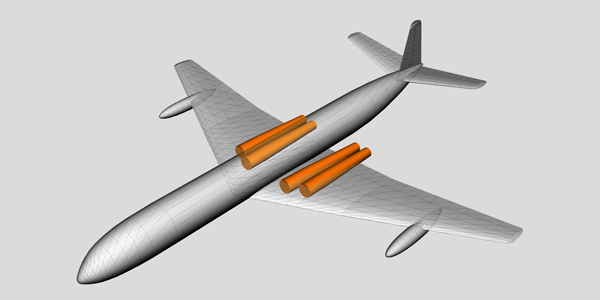Comet 4c v0.96 - Beta Testing
24/05/15 10:00

Fig. 1: Spread from the User Manual.
Comet 4C version 0.96 was released to beta testers on 22 February 2015.
Documentation is work in progress. Since testers are either developers in their own right, or highly experienced with X-Plane, or real pilots, a complete manual was not required for beta testing to begin. However, a certain amount of tuition was vital, such as how to start from cold and dark. These chapters were finished first, so that a reduced cut of the manual, called Testers' Notes, could be released with the beta. It also gave testers an opportunity to comment on the style and format of the manual.
With the february release, plug-ins were compiled for XP9.70 (32-bit) and XP10.30 (32/64-bit) in both Mac OSX and Windows versions. On 10 March 2015, plug-ins were compiled in Ubuntu 14.04.2 and released to beta testers using Linux.
Testers were under instructions not to hold back on criticism. Feedback was enthusiastic. 250 points were raised, including urgent fixes, such as the air brake not working when a joystick was attached, items that were not faults, but peculiarities of the real Comet that need to be explained properly in the manual, and cosmetic observations, such as black knobs on a black background being difficult to see.

Fig. 2: Live test and development database.
Some faults were solved quickly and easily. Others were more difficult, but progressing. As of today (25 May) 50 items remain outstanding.
One of the more difficult criticisms to address was instability in yaw. The real Comet had this to a certain extent, which made subjective analysis difficult. How much is too much? What's realistic?
The Comet had a very small tail fin by modern standards. Consider the area of the tail fin on the Comet 4C and a Boeing 737 (illustrated to scale in Fig. 3). Both aircraft had similar lengths, weights and cruising speeds, but the Comet fin has only 38% of the area of the fin on a 737. To compensate for the tail, the Comet had a fully-powered rudder and two yaw dampers (in case of failure). The manual stipulates that the Comet was not to be flown without a fully functioning yaw damper.

Fig. 3: Comparison of tail fin sizes between DH-106 Comet 4C and Boeing 737, to scale.
(X737 by Benedikt Stratmann and Pierre Stone).
However, this did not get me off the hook. I wrote to a real Comet pilot to ask whether he could remember it being an issue. He said not, but reminded me that any such observations would only have been in the context of the time, and the last time he flew one was 50 years ago. But no: nothing remarkable or memorable.
So I looked into things I might have done to make the X-Plane model worse than it should be. I found two, and they were each significant:
First, I had based all my calculations for the rudder on the wrong thickness-to-chord ratio. A typing blunder going right back to my first experiments in X-Plane 8. The correct ratio of 14% made it more effective and added 50% more drag. To understand how tail drag improves longitudinal stability, think of the flights on an arrow.
Secondly, I had corrected the model's drag performance by varying the Cd of the fuselage in flight. Since I was using this manipulation to compensate for draggy things like the engine intakes, the fuselage drag was quite a bit higher than it should be. This drag acted far forwards of the centre of gravity, creating a moment that opposed the tail fin, further exacerbating the yaw problem. Think of an arrow thrown back to front.
The solution was to restore the fuselage to standard (very low) Cd. Then to create new Plane Maker bodies around each engine. Not nacelle bodies, but miscellaneous bodies, so the drag could be manipulated.

Fig. 4: New Plane Maker "Nacelle Bodies" for drag manipulation, top three-quarter view.

Fig. 5: New Plane Maker "Nacelle Bodies" for drag manipulation, bottom three-quarter view.
The one great disadvantage in changing the flight model is that I had to run a complete set of flight performance tests all over again. Recording the cruise performance figures by hand took days; and I knew I would have to do it twice (once for XP9, once for XP10) and again in future for Comet 4, Comet 4B. So I wrote a plug-in to automate the process.
The flight test plug-in now manages fully automatic climb and descent, and fully automatic cruise from 40,000 feet to 1,000 feet in 1,000 feet intervals. At each level, it runs through a range of speeds and weights, letting the speed and altitude settle each time. Then it adjusts the Cd of the nacelle bodies until the RPM matches that specified in the DH manual, then the SFC of the engines to match the fuel flow.

Fig. 6: Comet 4C cockpit during fully-automated cruise test. Click for high resolution.
It still takes a long time to run, but at least I can do other things while it's churning away ...
--
GMM-P
(24-05-2015)
blog comments powered by Disqus
